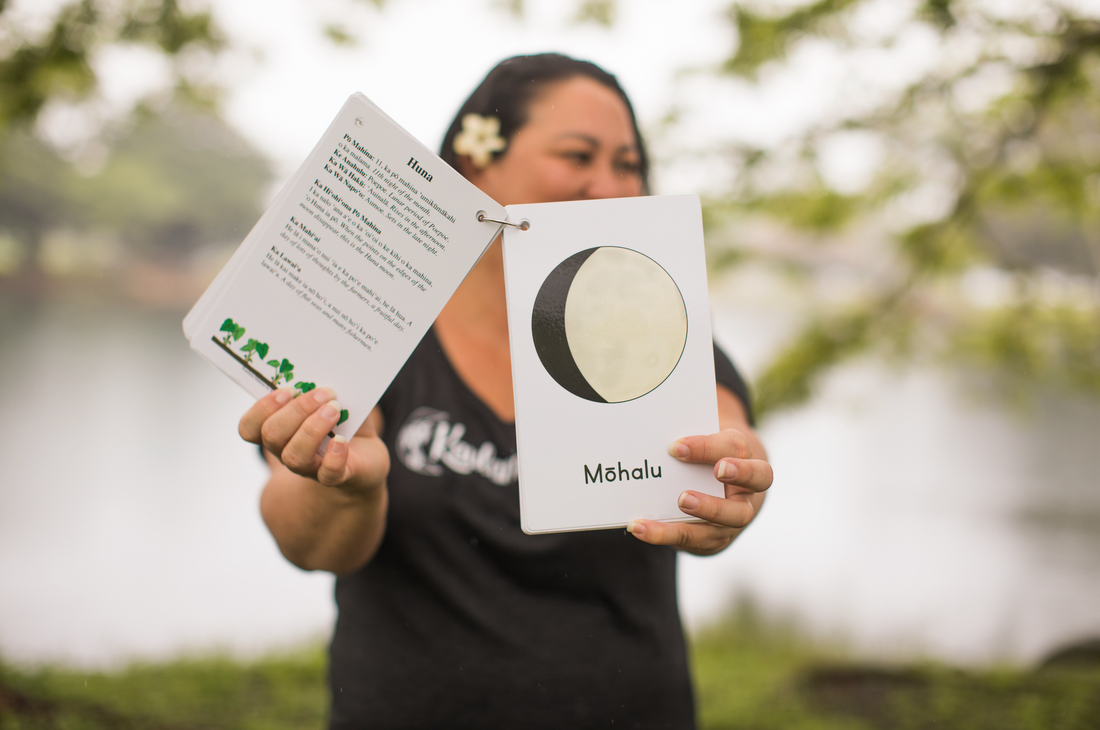Welcome back to my channel!
Lol, just kidding. But for real—it’s been almost three years since I wrote a blog post, and I figured it was about time to dust off the keyboard. Where have I been? Jamming! Life has been full, and I’ve been deep in my Mahina journey, teaching workshops, creating resources, and sharing knowledge with our community. But now, I’m back, and I want to stay committed to writing here more regularly.
So, what’s this blog going to be about?
I want to use this space to break down the mahina—the mechanics—of Mahina, or what we call the moon, and share things I’ve learned along my journey. A lot of these concepts are things we were technically supposed to learn in science class back in elementary school, but let’s be honest—that was a long time ago for most of us. And even if we did learn it, it was likely from a Western science perspective.
What I love to do in all my work is take that Western science side of things and pair it with ʻike Hawaiʻi—Hawaiian knowledge—because our kūpuna were scientists, too. They were meticulous observers of the world, and when you compare their knowledge with what we learn in Western science, you realize they were saying the same things—just in different ways.
So today, let’s start with moon phases!
The Western View of the Moon Phases
Most of us were taught the moon has eight main phases. Let’s do a quick review:
1. New Moon – The moon is completely dark (or nearly invisible).
2. Waxing Crescent – A small sliver of light appears on the right side.
3. First Quarter – The moon is half-lit on the right.
4. Waxing Gibbous – More than half of the moon is visible.
5. Full Moon – The entire moon is illuminated.
6. Waning Gibbous – The moon starts losing light on the right side.
7. Last Quarter – The moon is half-lit on the left.
8. Waning Crescent – A small sliver of light remains before the cycle starts over.
This is the system most of us learned, but our kūpuna took it way further.
The Hawaiian View of the Moon Phases
Instead of just eight phases, our kūpuna recognized 30 distinct nights of the moon cycle, naming each one based on the light (or pā), its position, and its effects on the environment.
Here’s a list of the 30 Hawaiian moon phases:
1. Hilo
2. Hoaka
3. Kūkahi
4. Kūlua
5. Kūkolu
6. Kūpau
7. ʻOlekūkahi
8. ʻOlekūlua
9. ʻOlekūkolu
10.ʻOlepau
11.Huna
12.Mōhalu
13.Hua
14.Akua
15.Hoku
16.Māhealani
17.Kulu
18.Lāʻaukūkahi
19.Lāʻaukūlua
20.Lāʻaupau
21.ʻOlekūkahi
22.ʻOlekūlua
23.ʻOlepau
24.Kāloakūkahi
25.Kāloakū lua
26.Kāloapau
27.Kāne
28.Lono
29. Mauli
30. Muku
Comparing the Two Systems
Here’s where things get really interesting.
In the Western system, the new moon is when the moon is completely dark. But in Hawaiian thought, this is Muku, which marks the transition from the old cycle to the new and the Hilo moon (which is a small sliver of light) is our “new moon”
And what about the full moon? Well, in Western science, there’s just one full moon. But in Hawaiian thought, we recognize four full moons, depending on who you ask:
• Some say the full moons are Akua, Hoku, Māhealani, and Kulu.
• Others say they are Hua, Akua, Hoku, and Māhealani.
Regardless of the variation, the key takeaway is that our kūpuna were so detailed in their observations that they could distinguish between different types of full moons based on their position and brightness!
Wrapping It Up
Our kūpuna were incredibly observant and used the moon not just for marking time but also for guiding planting, fishing, and daily life. This is just the beginning—there’s so much more to explore, and I hope this blog helps keep me accountable to share more!
Until next time, a hui hou!

